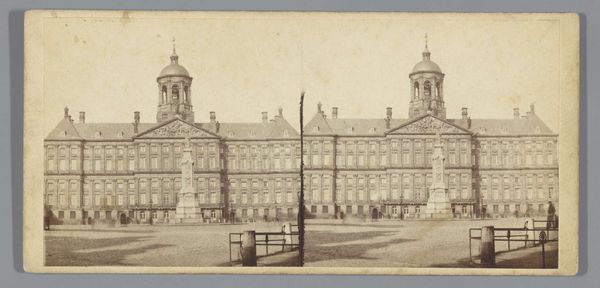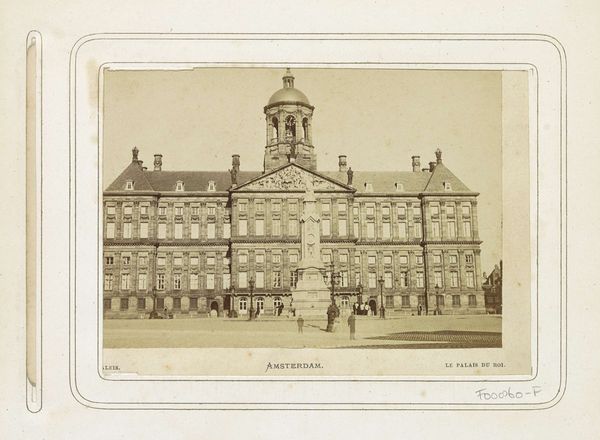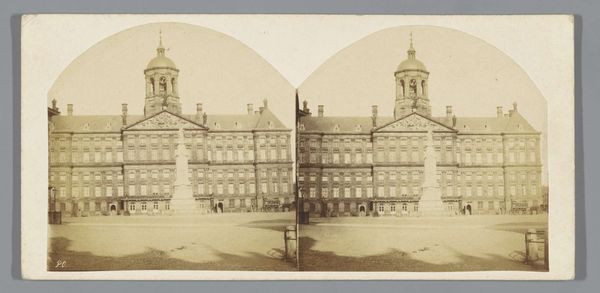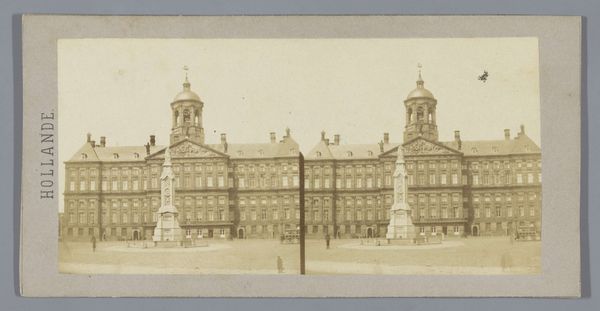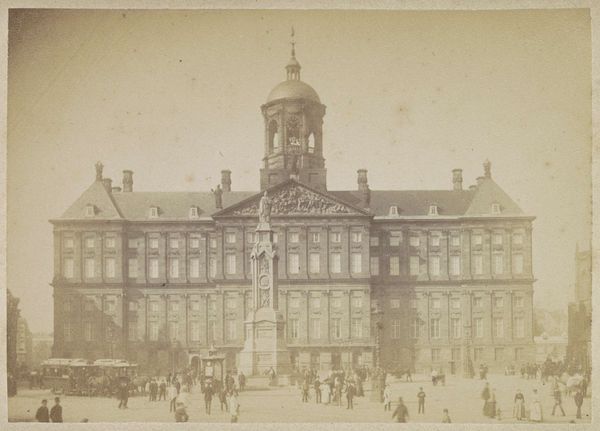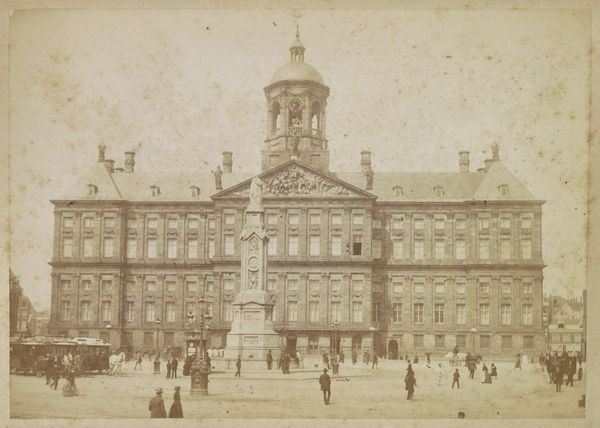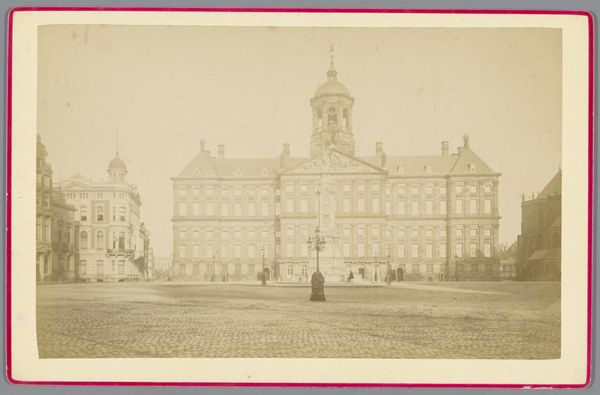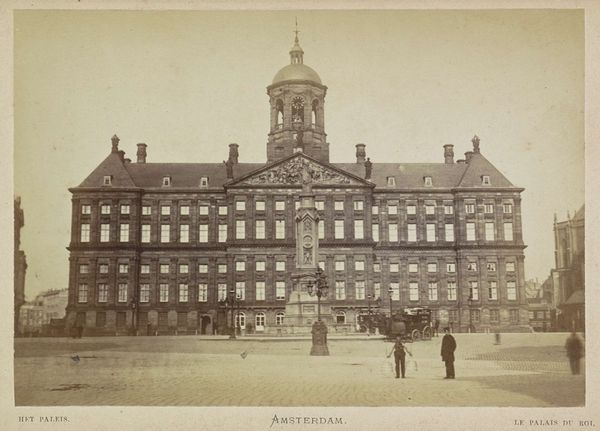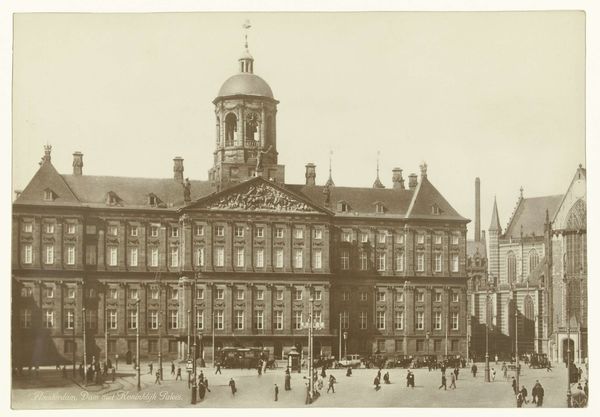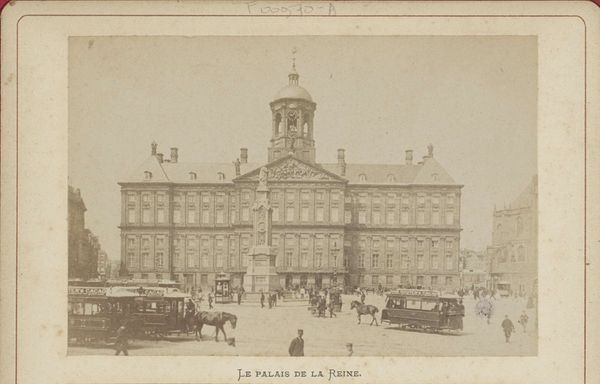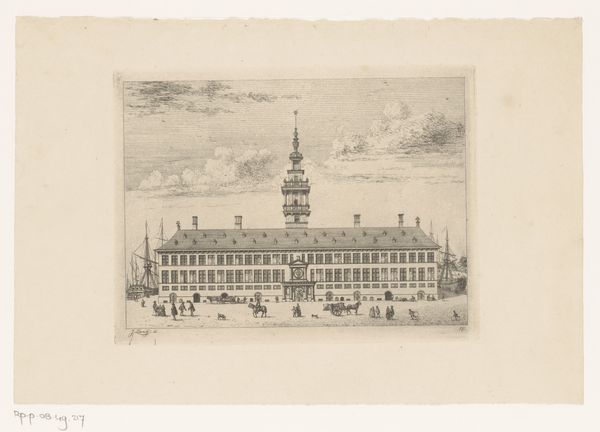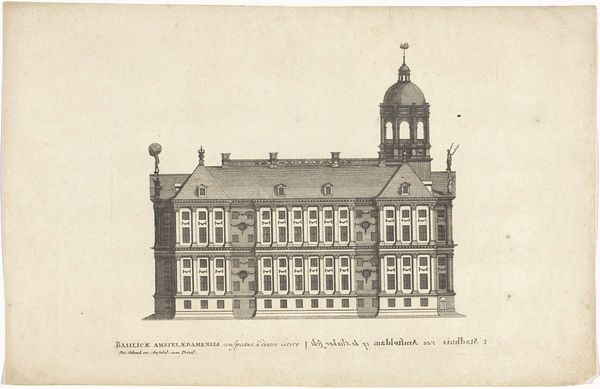
Koninklijk Paleis Amsterdam, met daarvoor Naatje op de Dam before 1860
0:00
0:00
print, daguerreotype, photography, site-specific, albumen-print
# print
#
landscape
#
daguerreotype
#
photography
#
geometric
#
site-specific
#
cityscape
#
history-painting
#
albumen-print
#
realism
Dimensions: height 132 mm, width 150 mm
Copyright: Rijks Museum: Open Domain
Curator: This print captures the Royal Palace of Amsterdam and the "Naatje op de Dam" monument, sometime before 1860. Pieter Oosterhuis is credited as the photographer. The albumen print, a marvel of early photographic technique, renders the Palace with an impressive clarity, though slightly sepia-toned. Editor: The palace certainly dominates! I’m immediately struck by the rigid geometry—the sheer repetition of windows creates a powerful sense of order, perhaps a little imposing, what do you think? Curator: Yes, its architectural solidity is evident. Oosterhuis captures not only the building, but also its political weight. The palace, originally built as the city hall during the Dutch Golden Age, was later transformed into a royal residence. The photograph speaks to shifting power dynamics in Amsterdam and the Netherlands. Editor: That conversion story absolutely adds another layer. Considering its pure form, though, note how Oosterhuis balances the strong horizontals of the facade with the vertical thrust of the monument in the foreground and the central dome. It is formally balanced to me, as it leads the eye. Curator: The monument to soldiers does bring focus on a burgeoning sense of nationalism, especially significant given the political climate of 19th-century Europe. This photography shows an emerging need to remember the past in order to give some form and identity to the modernizing state. Editor: I agree completely; without that column, it might feel… incomplete. Visually it also seems like it could fall out of focus without that solid geometry present right at the building. Now knowing the backstory gives it a more specific context to enjoy as a viewer. Curator: Precisely! What at first appears to be a simple cityscape is imbued with significant cultural and political implications once we consider its historical position. I really admire the historical perspective a photograph like this can have on society. Editor: The symmetry combined with what is in focus tells a much richer narrative. So well-stated! It’s that formal and historical interplay, and context combined, that really makes this such a compelling image.
Comments
No comments
Be the first to comment and join the conversation on the ultimate creative platform.
